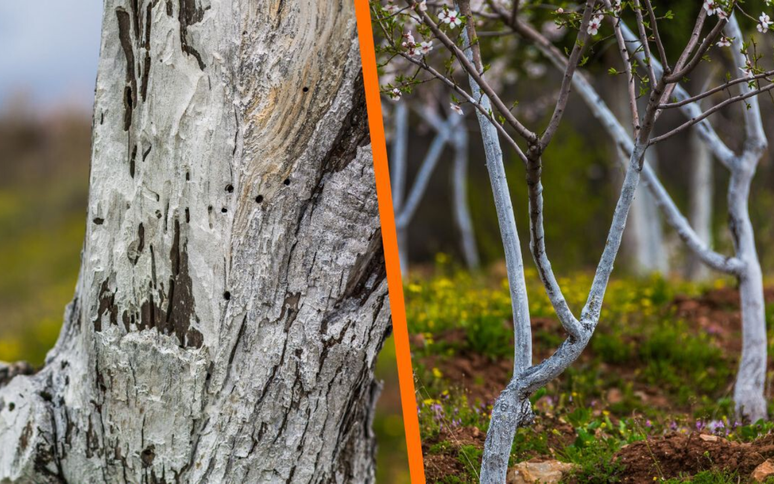This technique is a form of care that guarantees a series of benefits for the health of trees.
It is likely that on some occasion, in a park or on the street, you have noticed it fruit trees whose trunks were painted white. And if you have doubts about this peculiar practice, you can rest assured, because today the My life will reveal the reason.
This is an ancient tree care technique called whitewashing, a physical barrier made of lime.
Read also: Two beautiful plants that guarantee a home free from fleas and ticks
What is the purpose of adding lime to fruit trees?
- Prevention of parasites and diseases: lime creates a physical barrier that makes it difficult for insects and fungi, such as aphids or wood fungi, to proliferate
- Temperature regulation: lime helps maintain a more stable temperature in the trunk, preventing sudden changes that could damage the tree
- Correction of soil pH: In some cases lime can help correct the pH of excessively acidic soil, improving the availability of nutrients for the tree
- Sun protection: the lime acts as a reflector of the sun’s rays, preventing the trunk from burning, especially in the warmer months. This is essential to avoid cracks and damage to the shell.
When and how to properly add lime to fruit trees
…
See also
What is the purpose of adding lime to fruit trees: when and how to do it correctly
The mistake we often make when cleaning the kitchen: how to keep the floor clean and disinfected
If the question is how often you should wash your towel, few people will like the answer.
4 Fruit Trees You Shouldn’t Have in Your Orchard or Home Garden; let’s explain why
Two beautiful plants that guarantee a home free from fleas and ticks
Source: Terra
Ben Stock is a lifestyle journalist and author at Gossipify. He writes about topics such as health, wellness, travel, food and home decor. He provides practical advice and inspiration to improve well-being, keeps readers up to date with latest lifestyle news and trends, known for his engaging writing style, in-depth analysis and unique perspectives.









